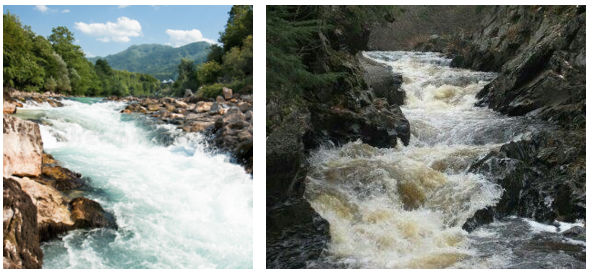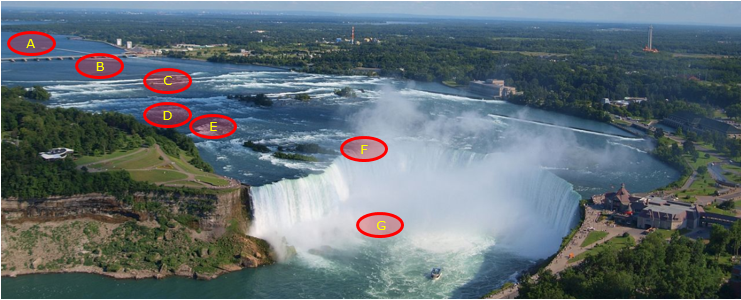|
Mechanical Engineering |
||
|
Fluid Mechanics : Flow Pattern (Laminar and Turbulent Flow)
A fluid flow through a path in various different pattern and these pattern would be so diverse if you look into it at the very detailed level and would be difficult to classify those patterns into only a few clear patterns. However, if you take a little bit high level view, you may see some of the distictive pattern. The most common two distinctive pattern that is most widely adopted in fluid mechanics are Lamiar Flow and Turbulent Flow as described below.
< Laminar Flow >
'Laminae' means 'thin layer'. Therefore, Liminar Flow would mean 'flowing in thin layer'. Does it mean that you see a lot of thin layers in the fluid flowing in Laminar Flow ? Of course, you wouldn't see those layers with your eyes. It just mean that it looks as if the fluid particles are folowing through a thin layer and does not interact with other layers, nor moving into other layers. Usually laminar flow is represented in a vector plot as shown below. If you take any single vector(arrow) and follow to the head of the arrow and jump to the next arrow, you would feel like you are following through a very thin path (i.e, layer = laminae). This gives the name of 'Laminar flow'. In lamiar flow, the front line of the moving fluid usually forms hyperblic shape as in dotted line shown below.
In more intuitive and practical sense, you can see some examples of laminar flow in a quiet river or canal as shown below. Water flows very slowly and smoothly and you don't see any swirls or high waves in laminar flow.
< Turbulent Flow >
It is hard to describe in words on what is 'Turbulent Flow'. One of the comment description of 'Turbulent Flow' would be 'Chaotic movement of the fluid'. The you may ask what is 'Chaotic' ? and so on. It would be much easier to explain it in a diagram as shown below. Yes,.. this is turbulent flow.
In real life, you may easily see these turbulent flow in narrow river and creek especially after a heavy rain as shown below.
< Flow Pattern in Real Life and Reynolds Number >
I have described the flow patterns that are obviously distictive from each other, Laminar and Turbulent flow. However in real life, there are many cases where the flow pattern would not look obviously distictive as described above.
For example, let's suppose that you are around Niagaran fall and looking at various point of the area as circled below.
You would see obvious laminar flow at point (A) if it is a quiet day and you would see obvious turbulent flows at point (F), (G). However, if you are at some point like (B) or (D) .. the flow would not look like obvious laminar nor obvious turbulent. Therefore you would realize that the two extreme classification (Liminar and Turbulent) would not be enough to classify all those subtle flow patterns. To provide a way for more diverse pattern and quantative indicator of the follow pattern, we use a special indicator called 'Reynold's Number'. In many areas there has been a lot of researches that associate the range of Reynolds number with Liminar / Turbulent flow pattern. For example, in case of a fluid folowing through a pipe, if the Reynold's number is less than 2100, the flow pattern is classified as Liminar and if the number is greater than 4000, the follow pattern is classified as turbulent.
Reference :
[2] fluid kinematics: streamlines. definitions, simulations and worked example [3] Turbulence
|
||




